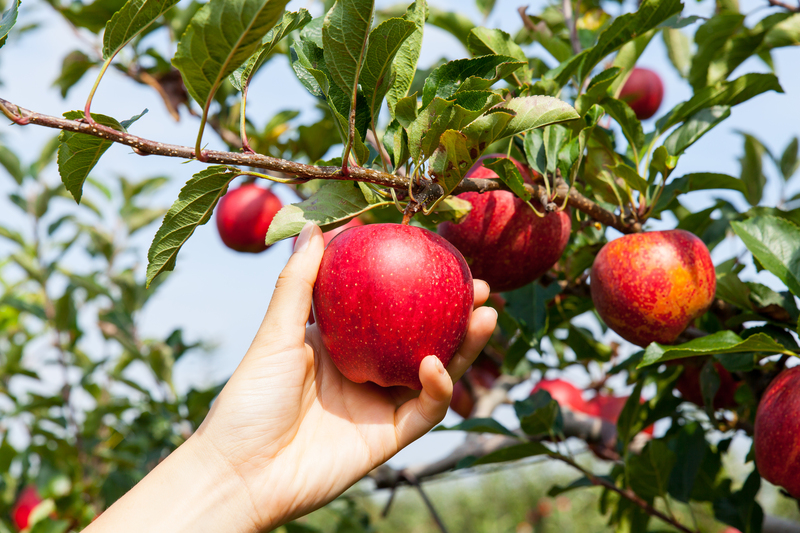Discover Secrets to Keep Your Garden Blossoming in Winter
Posted on 02/07/2025
Discover Secrets to Keep Your Garden Blossoming in Winter
Winter can be a challenging season for garden lovers. As temperatures drop and daylight hours shorten, many garden plants go dormant, and blooms can become scarce. However, with the right approach and a little know-how, you can keep your winter garden blossoming and vibrant even in the coldest months. In this comprehensive article, we'll uncover expert secrets to maintain a beautiful garden in winter, explore the best winter-blooming plants, and offer actionable tips for year-round floral color.

Why Do Gardens Struggle in Winter?
Cold weather, frost, snow, and reduced sunlight are among the biggest challenges gardens face during the winter months. Most plants naturally enter a period of dormancy to survive harsh conditions, sacrificing blooms and growth. However, not all hope is lost for eager gardeners who want to enjoy winter gardening success.
The Best Winter-Blooming Plants for a Vibrant Garden
One of the top secrets to a consistently blossoming winter garden is choosing cold-hardy, winter-blooming plants. Here are some resilient varieties that can withstand the chill and provide color all season:
1. Hellebores (Winter Rose)
2. Camellias
3. Winter Jasmine
4. Cyclamen
5. Witch Hazel
Bonus Tip: Incorporate evergreen shrubs and ornamental grasses for year-round structure and beauty.
Secrets to Winter Garden Care and Maintenance
1. Provide Proper Mulching
- Insulation: Apply a thick layer of organic mulch around the base of plants to help insulate roots and regulate soil temperature.
- Moisture Retention: Mulch prevents rapid water loss and protects against freeze-thaw cycles.
- Best Materials: Use straw, shredded leaves, pine needles, or compost for effective winter mulching.
2. Select the Right Plant Locations
- Microclimates: Position tender plants near walls or fences to benefit from radiant heat.
- Shelter: Use windbreaks or hedges to protect against cold winter winds, reducing desiccation and frost damage.
- Drainage: Ensure planting sites offer good drainage; waterlogged soil increases root rot risk in winter.
3. Watering Wisely
- Monitor Soil Moisture: Winter winds and sun can dry soil even in cold weather. Water deeply during dry spells when temperatures are above freezing.
- Morning Watering: Water early in the day, allowing moisture to absorb before nighttime freezes.
- Avoid Overwatering: Plants need less water during dormancy; excess moisture can lead to rot.
4. Protect Plants from Frost and Snow
- Cover at Night: Use frost cloths, sheets, or burlap to cover tender plants on freezing nights.
- Shake Snow Gently: Heavy snow can break branches--gently brush off accumulation to prevent damage.
- Greenhouses/Cold Frames: Shelter the most delicate specimens for optimal winter gardening success.
5. Prune at the Right Time
- Selective Cutting: Remove dead or diseased wood, but avoid extensive pruning of most plants until late winter or early spring to prevent stimulating new, frost-tender growth.
- Shape Evergreens: Lightly trim evergreens to maintain their form and encourage healthy development.
Winter Gardening Techniques for Maximum Blooms
Grow in Containers
Container gardening offers flexibility to move plants for optimal light and protection. Use well-draining pots and insulated planters to avoid root freezing. Pair hardy pansies, violas, and ornamental kale for an eye-catching winter display.
Embrace Layered Planting
Mix bulbs, perennials, and annuals with varying bloom times and textures. Layer snowdrops, crocuses, and hyacinths beneath evergreens for continuous color.
Feed Your Winter Garden
Slow-release organic fertilizers provide nutrients without stimulating excessive growth. Avoid high-nitrogen feeds in winter; instead, focus on phosphorus and potassium for strong roots and winter blooms.
Enhance with Garden Decor
When blossoms are sparse, garden ornaments, bird feeders, and even colored mulch can add visual interest. Strategically placed lighting showcases your winter garden's beauty after dark.
Common Mistakes in Winter Gardening and How to Avoid Them
- Neglecting Soil Health: Maintain rich, well-draining soil with added compost.
- Improper Pruning: Only remove clearly dead, damaged, or diseased branches in winter.
- Ignoring Pests: Even in winter, pests like aphids can persist; monitor and treat accordingly.
- Overcrowding: Space plants for air circulation to reduce disease risk.
- Forgetting to Deadhead: Remove faded blooms from winter-flowering plants to encourage more blossoms.
Frequently Asked Questions About Winter Gardening Secrets
Q: Can I plant new flowers in winter?
A: In most climates, winter is not ideal for new plantings. However, you can pre-chill or "force" bulbs like daffodils and tulips indoors for late winter or early spring blooms.
Q: How can I make my garden colorful in winter?
A: Combine blooming shrubs, winter-hardy annuals, evergreens, and add decorative elements like colored pots, garden art, and string lights for a lush, inviting look all winter long.
Q: Should I fertilize during winter?
A: Use slow-release formulas, mainly phosphorus and potassium. Avoid nitrogen-rich fertilizers that can spur weak, frost-sensitive growth.
Q: How do I protect my garden from harsh winter conditions?
A: Use mulches, row covers, and move containers to sheltered locations. Water sparingly but consistently during dry periods and shield plants from wind and heavy snow.
Q: Are there flowers that bloom in snow?
A: Yes! Hellebores, snowdrops, and witch hazel are among the few flowers that can bloom even with snow on the ground.
Quick Checklist: Secrets to Blossoming Winter Gardens
- Select hardy, winter-blooming plants and evergreens.
- Use organic mulch for insulation and moisture control.
- Monitor soil moisture and avoid overwatering.
- Provide protection from snow, frost, and wind.
- Prune cautiously--only dead or diseased growth.
- Feed with balanced, low-nitrogen fertilizer.
- Add color and interest with decor and lighting.
- Regularly inspect for pests or disease--even in winter.

Planning Ahead: Setting Up Next Year's Winter Garden
The real secret to a truly blossoming winter garden is preparation. In spring and autumn, think ahead by planting bulbs and perennials known for winter hardiness and late bloom times. Sow cold-hardy annuals in the fall for root establishment before winter sets in. Regular updates to soil health, routine garden cleanup, and careful plant selection will help ensure continuous color and vigor throughout the year.
Conclusion: Enjoy Year-Round Blooms with These Winter Gardening Secrets
Winter doesn't have to signal the end of your garden's beauty. Through strategic plant choices, consistent care, and creative enhancements, your garden can flourish with blossoms and color even during the coldest months. Apply these secrets for keeping your garden blossoming in winter and transform your outdoor space into a vibrant, thriving oasis all year round.
Don't let winter keep your garden dull and lifeless. Start integrating these winter garden secrets today and watch as your home becomes the envy of the neighborhood--even when frost reigns outside!

